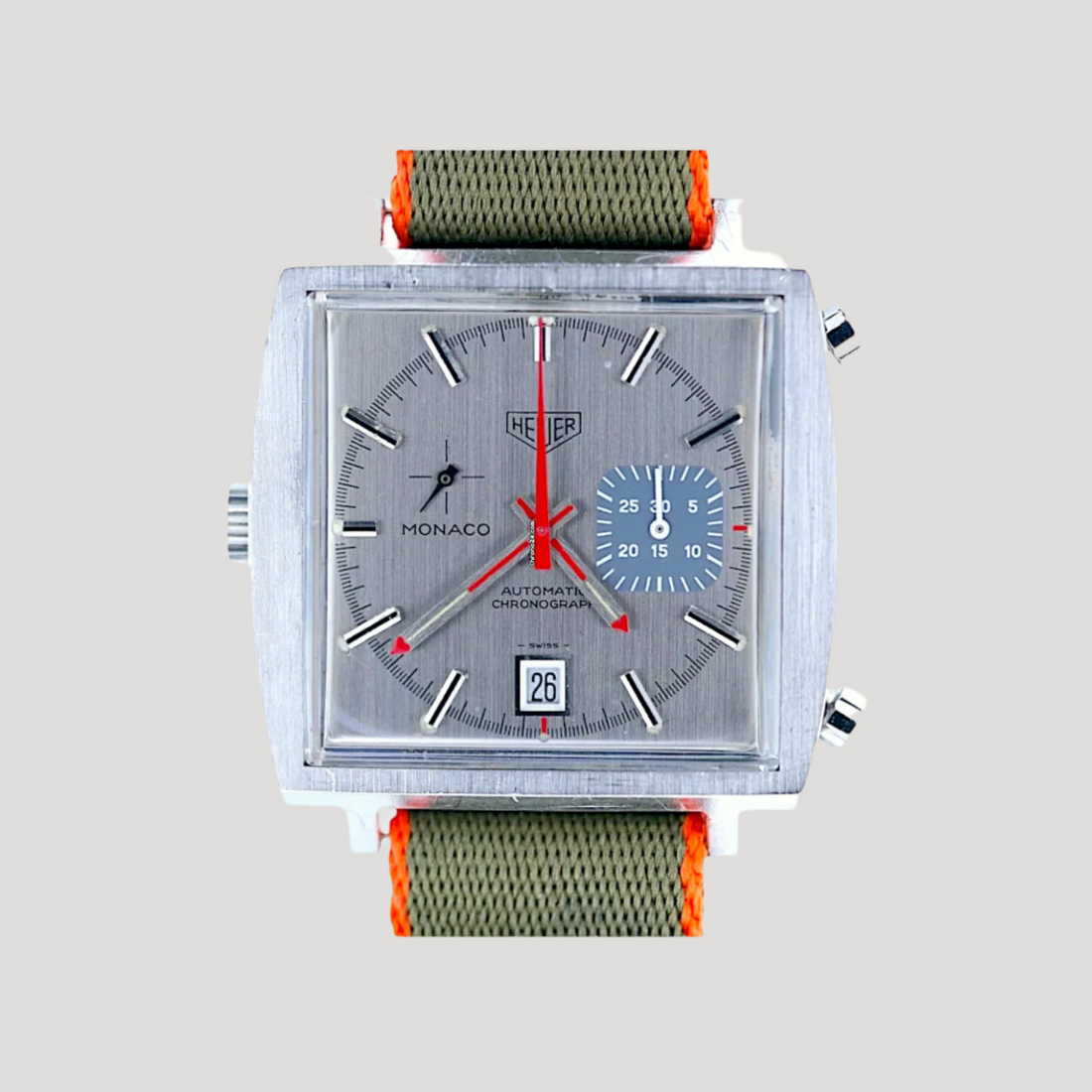
Heuer - The spirit of Motor Racing
Share
When discussing the most revered names in horology, Heuer (now TAG Heuer) emerges as a symbol of Swiss precision intertwined with the spirit of motor racing. Long before it became TAG Heuer in the mid-1980s, Heuer established itself as a pioneer in chronographs and timing instruments. Collectors and motorsport enthusiasts alike regard vintage Heuer timepieces not just as watches, but as capsules of adrenaline, innovation, and enduring design.
Beginnings: Edouard Heuer and the Foundation of Timing Excellence
Founded in 1860 by Edouard Heuer in St-Imier, Switzerland, the Heuer Watch Company was born into a world hungry for precision. By 1887, Heuer had patented the oscillating pinion – a critical innovation still used in many chronographs today. This focus on mechanical innovation laid the groundwork for Heuer’s future dominance in sports timing.
In the early 20th century, Heuer became known for dashboard timers for automobiles and aircraft, setting the stage for its eventual immersion into motorsport.
Racing Ahead: Motorsport and Heuer’s Golden Era
By the 1950s and '60s, Heuer had become synonymous with auto racing. Jack Heuer, great-grandson of the founder and a visionary in his own right, took over the company and positioned Heuer as the go-to brand for racing drivers and teams. The relationship wasn’t just aesthetic – Heuer provided reliable, legible, and robust chronographs used for split-second timing on the track.
Key milestones include:
Becoming the official timekeeper for major racing events like Formula 1 and Le Mans.
Partnering with Ferrari from 1971 to 1979, where Heuer branding adorned both cars and driver suits – including legends like Niki Lauda and Clay Regazzoni.
Iconic Models and Collectibility
Today, vintage Heuer watches are highly collectible, with certain models achieving grail status among enthusiasts.
🔹 Carrera (1963)
Named after the dangerous Carrera Panamericana road race, the Heuer Carrera is arguably the brand's most elegant chronograph. With its minimalist dial, perfect proportions, and motorsport DNA, the original Carrera remains a benchmark for chronograph design.

🔹 Monaco (1969)
The Monaco was radical – square case, bold styling, and most importantly, one of the first automatic chronographs (Caliber 11). Immortalized by Steve McQueen in Le Mans (1971), the Monaco became a pop culture icon and remains a collector favorite.

🔹 Autavia (1962)
Derived from “AUTomobile” and “AVIAtion,” the Autavia was originally a dashboard timer before becoming a wrist chronograph. Its rotating bezel and sporty build made it a favorite among rally drivers and pilots alike.
🔹 Heuer Bund and Bundeswehr Chronographs
Military-issued Heuer chronographs, especially the "Bund," are also prized, notable for their rugged construction and clean design.
The TAG Era and Beyond
In 1985, the TAG Group acquired Heuer, forming TAG Heuer. While the DNA remained, the new entity embraced modern materials and marketing, with partnerships extending to athletes, celebrities, and F1 teams like McLaren and Red Bull Racing.
Despite the evolution, the brand has continually revisited and reissued its vintage designs, feeding both nostalgia and demand among collectors.
Why Heuer Collectibility Endures
Vintage Heuer timepieces offer:
Historical relevance – deeply tied to motorsport’s golden years.
Mechanical innovation – such as the Caliber 11, among the first automatic chronographs.
Design legacy – with timeless styles that influenced decades of watchmaking.
Cult following – a strong community of collectors, especially within the "Heuer-only" niche.
Final Thoughts
Heuer isn’t just a watch brand – it’s a chronicle of speed, ambition, and design excellence. Whether strapped on the wrist of a Le Mans driver or ticking in a collector’s safe, a vintage Heuer embodies more than timekeeping; it reflects an era where precision met passion.
Explore more Here


